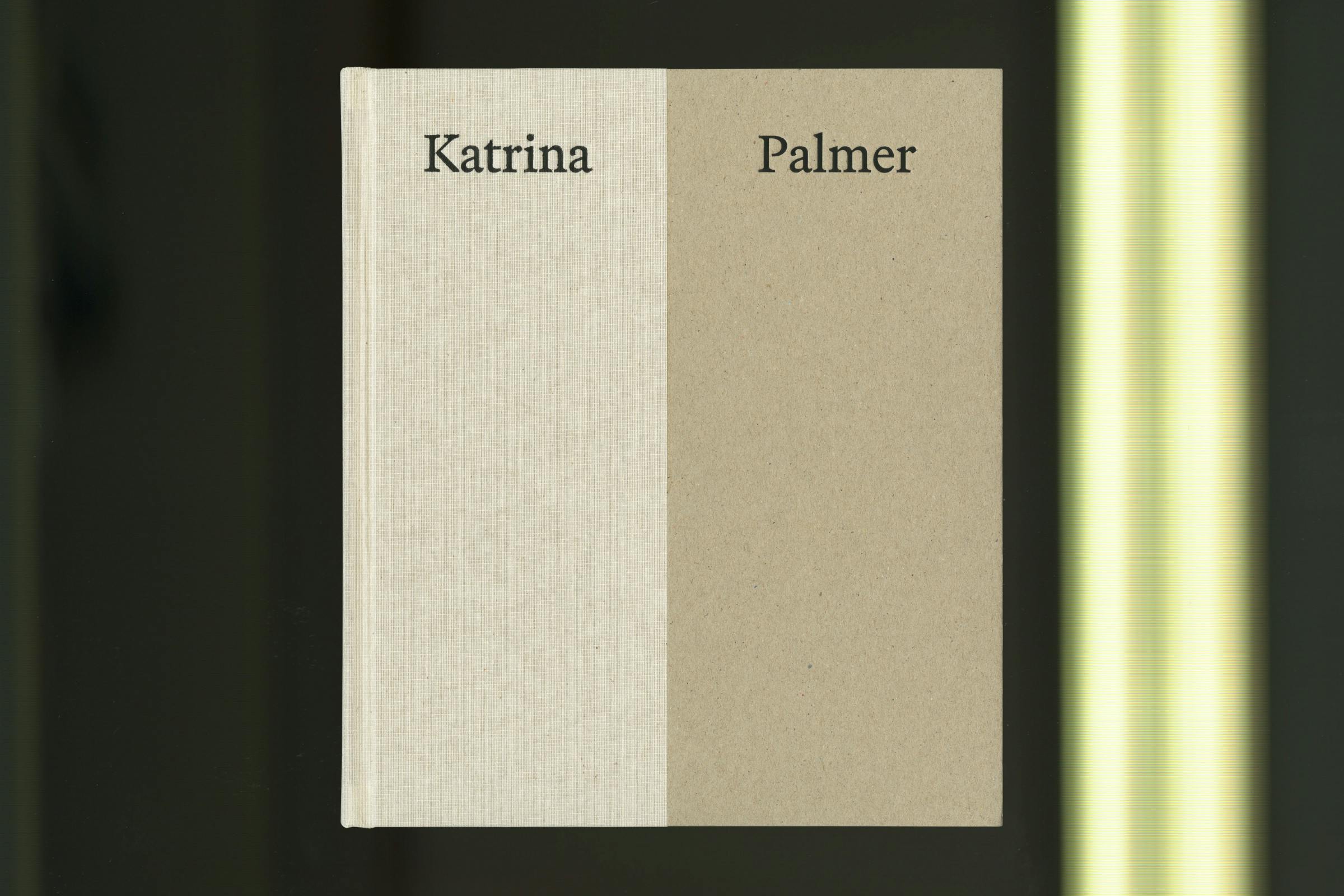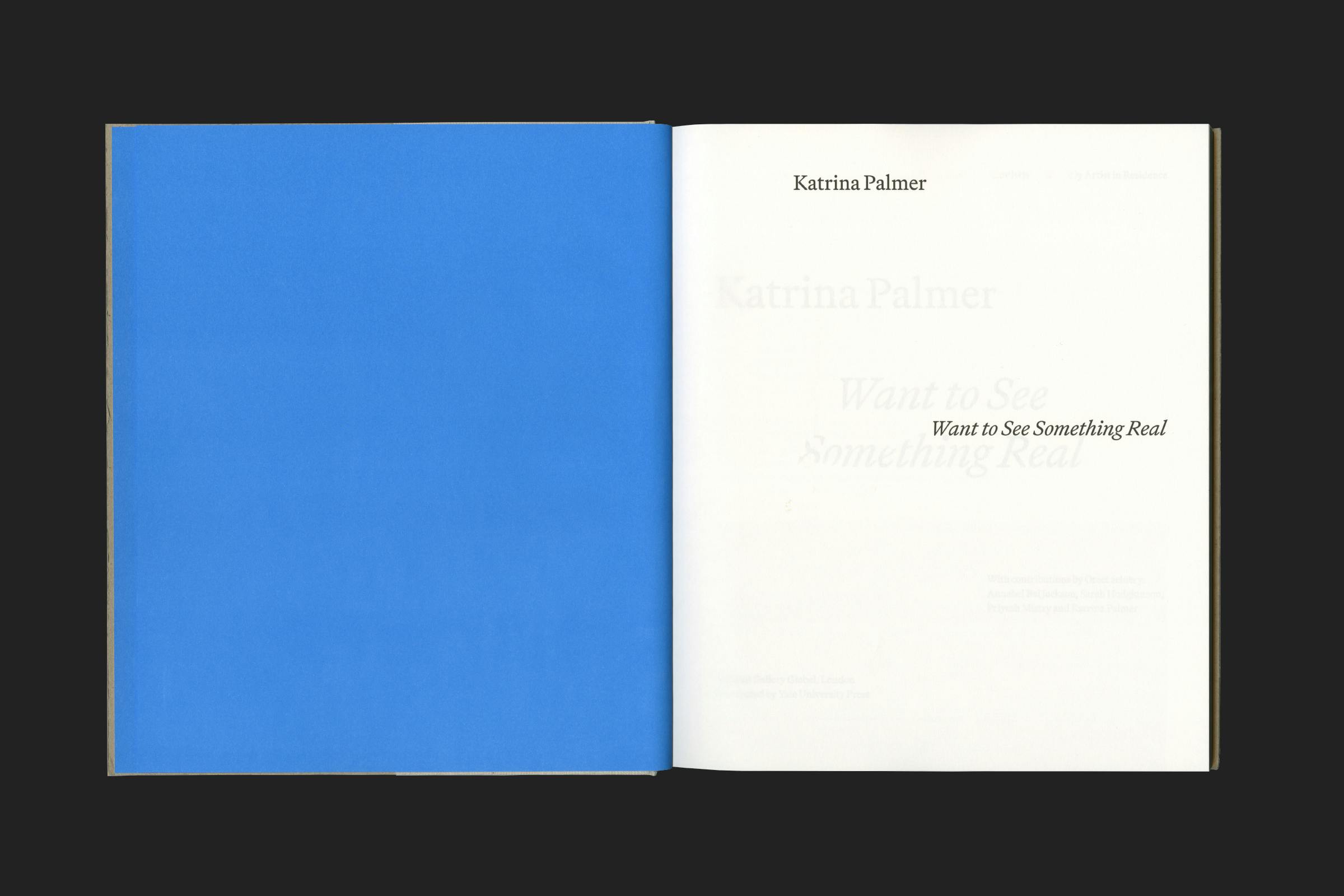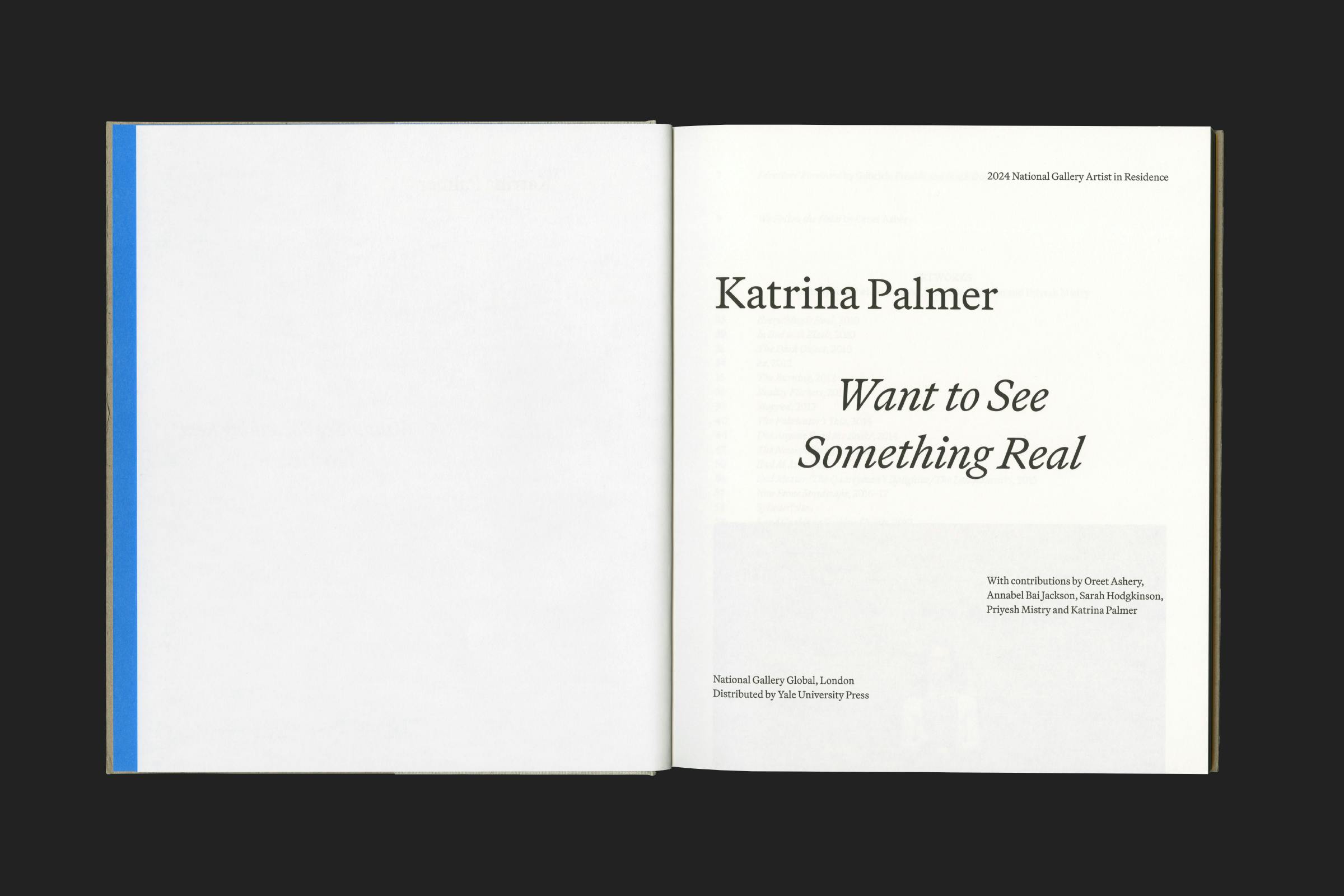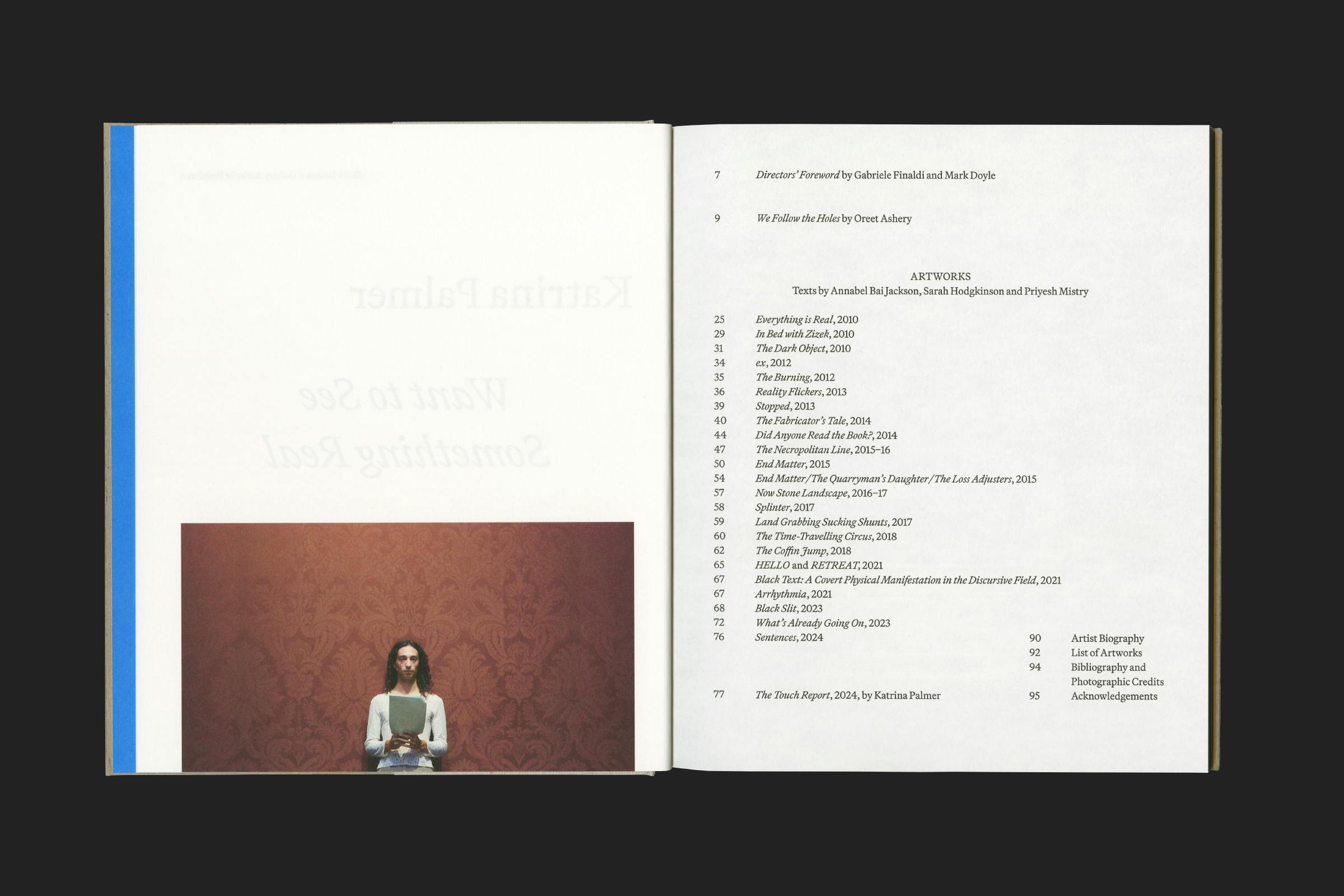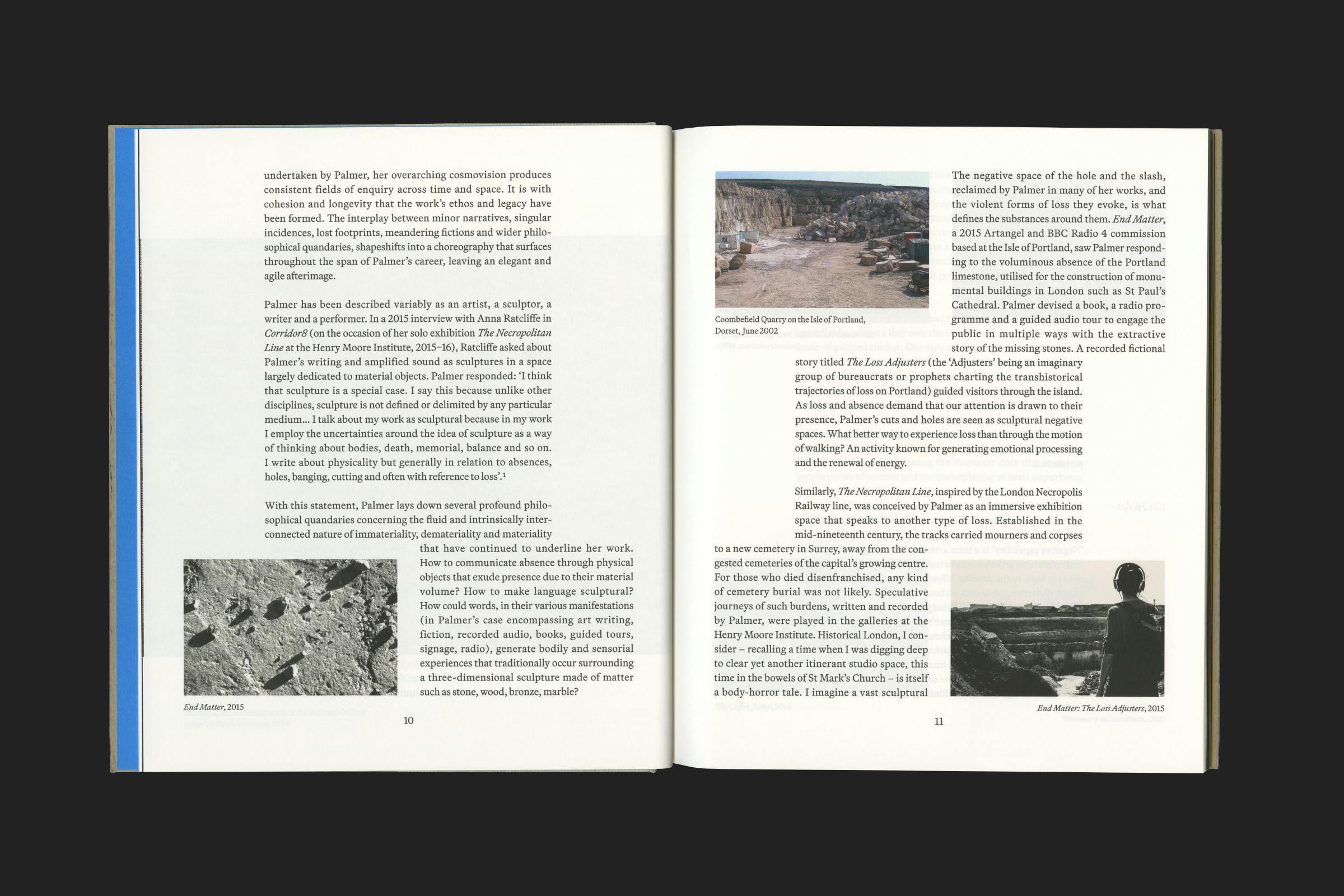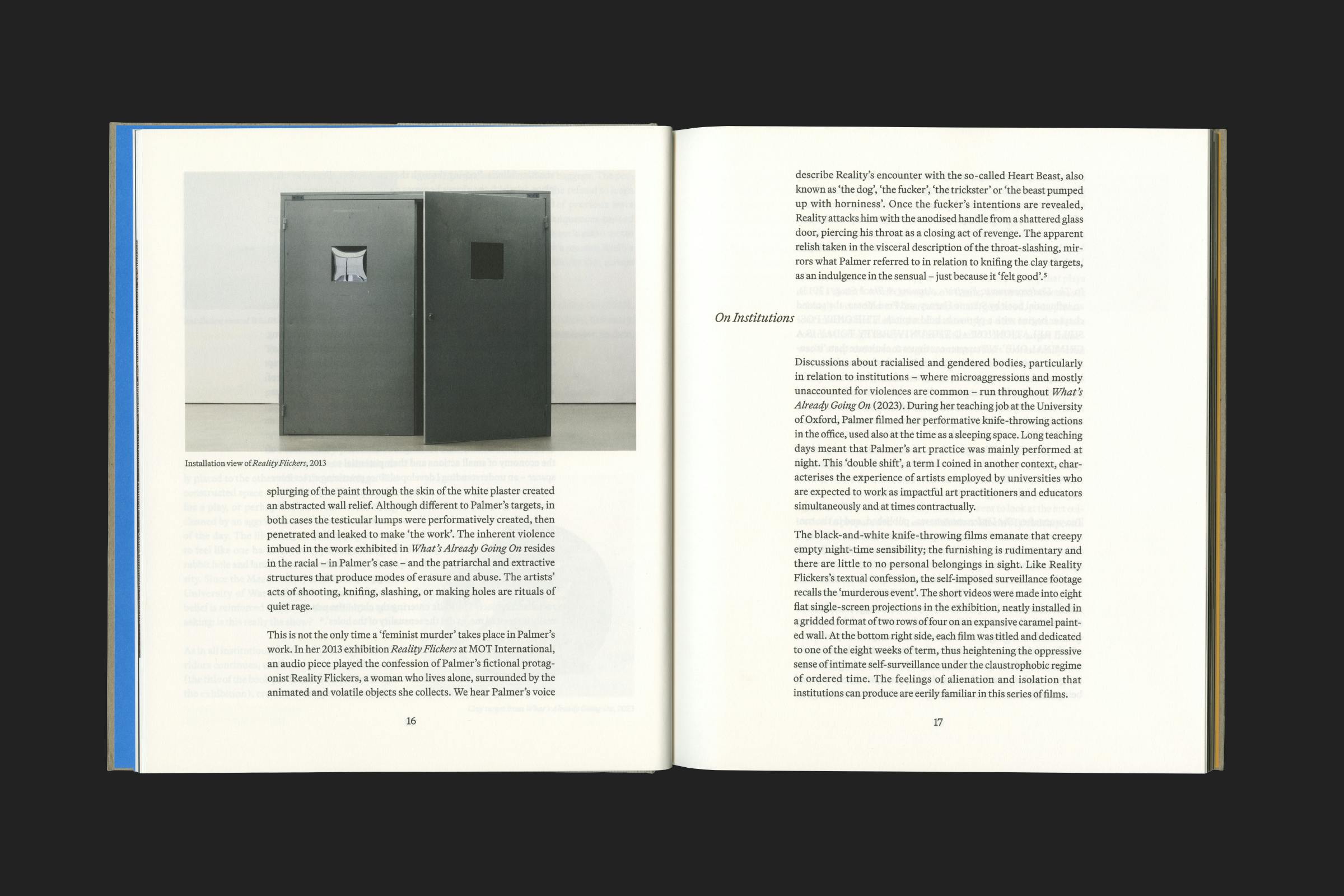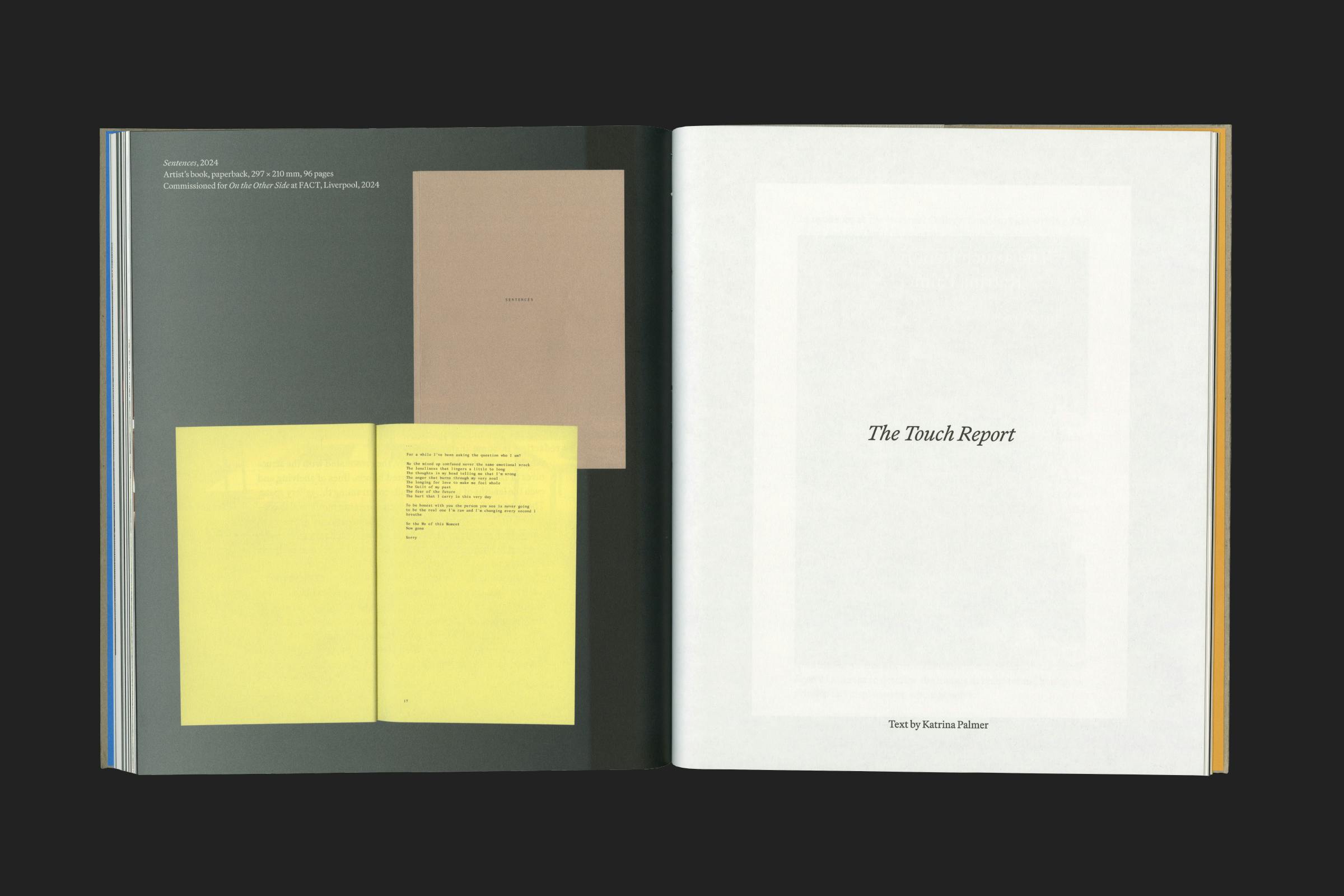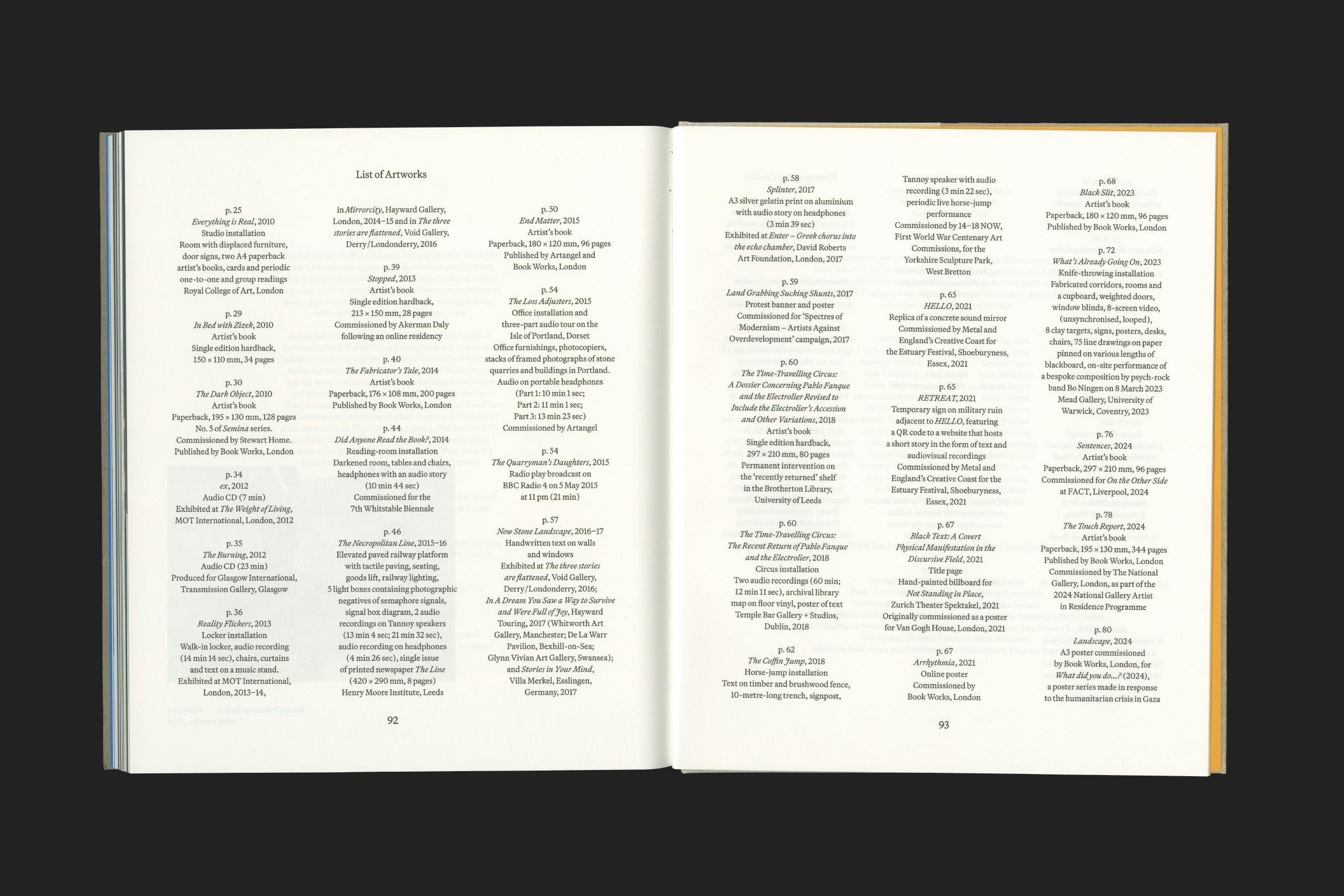
Katrina Palmer: Want to See Something Real
This publication accompanies Katrina Palmer’s 2024 residency at the National Gallery, London, acting as a survey of her work to date and the outcome of her year at the gallery.
Palmer’s practice often involves sculpture, written compositions, site-specific audio recordings, performance, video and drawing, all exploring histories of absence within landscapes or institutional spaces. At the end of her residency, she has created a different perspective for Room 18 of the National Gallery, and its paintings.
Struck by an empty wall – the result of paintings being moved away from the vibrations caused by building work – Palmer has surveyed the impact of this displacement for the gallery and beyond. Through the works in the room, (including Rubens’s ‘Samson and Delilah’, and ‘Peace and War’), her resulting exploration addresses themes of change and movement, of gaps and displacement, and their repercussion.
Client
The National Gallery
Category
Curators
Annabel Bai Jackson, Priyesh Mistry
Editor
Nadine Monem
Format
230 × 270 mm
Extent
96pp
Cover
Three-quarter bound hardback
Finishing
Foil, Screenprint
Binding
Section sewn
Typeface
Martina Plantijn
Taking inspiration from Palmer’s relationship with the book as an ‘object’, and how that relates to her artistic practice, this publication has been deconstructed, exposing the raw board of the hardback format, which is then reinforced with a special book-binding material that is ordinarily used for strengthening book spines, or for repairing damaged books. The title is then foil blocked over these material changes to create an act of impression.
On opening the cover, there are two bold endpapers in alternating colours that form a striking effect when compared to the natural cotton fibres of the binding cloth and the mottled tones of the raw, recycled board.
Extensive texts by Oreet Ashery, Annabel Bai Jackson, Sarah Hodgkinson, Priyesh Mistry and Palmer herself sit with contextual imagery showcasing the diverse range of Palmer’s work – each cover of her previous publications has been scanned in the studio with the lid removed so that their backgrounds reveal the texture of the room.
A central column runs throughout the interior of the book, shifting in position depending on how the images interact with the text.
Type is set in Martina Plantijn, a contemporary redraw of the classic text-face, loosely based around drawings by the French typecutter Robert Granjon from the 17th-century, and originally revived by Frank Hinman Pierpont for the Monotype Corporation in the 1930s, where it became widely used for newspapers and fiction.
